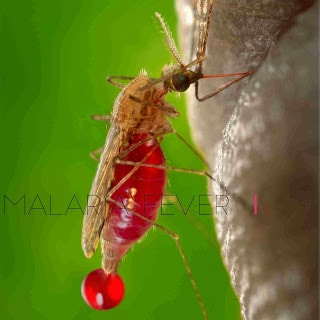If a female Anopheles mosquito bite and suck the blood of a person having malaria fever, the mosquito becomes infected. The male and female gametocytes in the infected blood grow and mature in the gastrointestinal tract of the mosquito. The male gamete is known as the microgamate exflagellates.
Fertilization then occurs to produce a zygote. The zygote progressively develops into 00 kinete, young ooocyte and segmenting oocyte. The oocyte rupture to release sporozoites into the salivary gland of the mosquito.
SIGN AND SYMPTOMS OF MALARIA FEVER.
- Fever which may be accompanied by chills and rigor.
- A headache.
- Joint and body pain.
- Sweating.
- Los of appetite.
- Weakness.
- There may be nausea and or vomiting.
- Investigations
- Blood film.
PREVENTION OF MALARIA FEVER
- Good environmental sanitation by a clearing of surrounding bushes providing adequate drainage.
- Providing mosquito nets.
- Taking daraprim tablets once every week especially amongst pregnant woman and sicklers.
CURATIVE MANAGEMENT OF MALARIA FEVER
Being the commonest disease condition in our environment many drug companies have research on one form of treatment modalities or the other and have come up with as many antimalarial drugs as possible. But by far the most effective of all remain chloroquine and it has remained the mainstay of
treatment.
An antihistamine may be added for those who react to chloroquine. The list of anti-malaria drugs is given below and it is up to the clinician to use any one of his choices.
- Paludrine.
- Maloxine.
- Malerisch.
- Fansida.
- Fansimef.
- Metakelfin.
- Chloroquine.
- Quinine.
- Halfan.
- Paluther.
Supportive drugs Include :
- Intravenous fluid is indicated.
- Analgesics
- Haematinics.
- Multivitamins
- 0Anti-histamine.
COMPLICATIONS OF MALARIA FEVER
- Cerebral malaria especially in children
- Anemia.
- Jaundice.
- Blackwater fever
Typical treatment for malaria fever:
- lm Analgin 5cc stat
- lm Chloroquine 5cc
- lm Vitamin Bco 3 cc, dly 3/7
- Tab septrin b-d ×5/7
- Tab Pcm tds ×3/7
- Tab Fergon tds × 5/7
- Tab Multivite tds ×5/7


